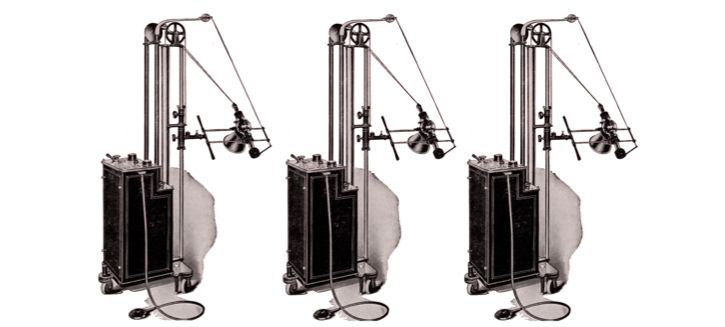Evolution, Not Extinction: Radiologists Embrace Machine Learning and AI
“We’re looking at it with a lot of excitement, not a lot of fear and dread."

(Photo: a 1921 Kelley-Koett radiograph, as shown in the Journal of Radiology. Photo is in public domain, courtesy Wikimedia Commons)
When asked what healthcare profession artificial intelligence and machine learning will eliminate first, most industry experts have the same answer: radiologists. Author and healthcare executive Ezekiel Emanuel, MD, went so far as to tell Healthcare Analytics News™ that radiologists were “definitely out of a job in the next decade because of machine learning.”
Radiologists themselves reject that assumption. At the Radiological Society of North America (RSNA)’s annual meeting next week in Chicago, they will even be hosting a machine learning showcase.
“The common pretext is that we have nothing left to offer,” Adam E. Flanders, MD, said in an interview. “Part of it is the hype that makes it into the lay press, about our profession disappearing or going into extinction like the dinosaurs.”
Flanders is a radiologist at Thomas Jefferson University Hospital in Philadelphia, and he serves as the chair of the RSNA’s Radiology Informatics Committee, which was involved in setting up the exhibit. Rather than pushing the radiologist to extinction, he sees new machine learning technologies as an evolution for the profession.
“We’re looking at it with a lot of excitement, not a lot of fear and dread,” he said.
Flanders thinks machine learning can help radiologists in major ways. It can detect details and changes in an image that are too minute for the human eye, which makes the profession even more capable. To those who say this is why technology will eliminate his job, he notes that the algorithms will still require human supervision.
“Radiologists are all going to become junior data scientists,” he said. “We’re going to be the ones that are going to help train these algorithms, and we’re going to be central to helping to validate whether they’re working efficiently, effectively, and accurately.”
There are other ways that machine learning can help radiology grow. Automated workflow optimization to help them prioritize their days. Computer vision in laboratory settings can inform healthcare’s understanding of tumors. And machine learning systems could be deployed to diagnose patient conditions in places where human clinicians are in short supply, including developing countries.
“These are only tools, but the tools can’t operate on their own effectively, and they certainly can’t operate unsupervised. It’s not the equivalent of replacing humans on an assembly line to make cars,” Flanders said, arguing that the complexity of the work was too great to compare it to installing a steering wheel.
Far from rejecting machine learning, the RSNA has embraced it. Over the past few months, the organization ran a competition called the Pediatric Bone Age Challenge. The open challenge asked teams to develop an algorithm that could most accurately predict the age of pediatric bone radiographs. They received over 300 entries from around the world, and the winners will be announced during the machine learning showcase next week.
Telehealth faces a looming deadline in Washington | Healthy Bottom Line podcast
February 12th 2025Once again, the clock is ticking on waivers for telemedicine and hospital-at-home programs. Kyle Zebley of the American Telemedicine Association talks about the push on Congress and the White House.